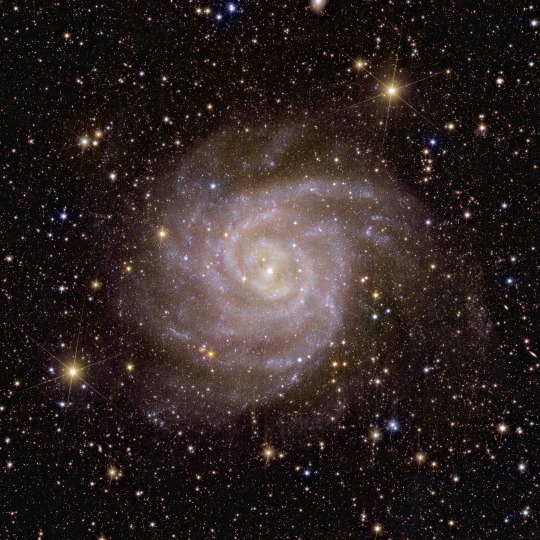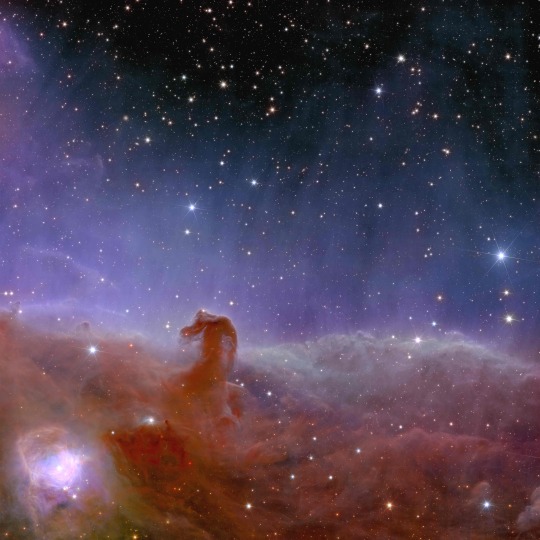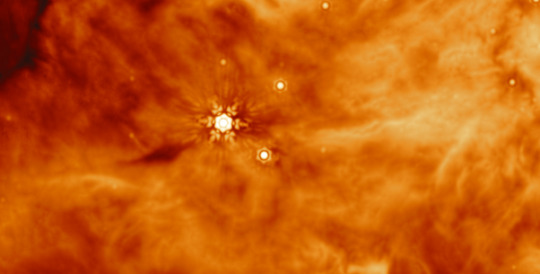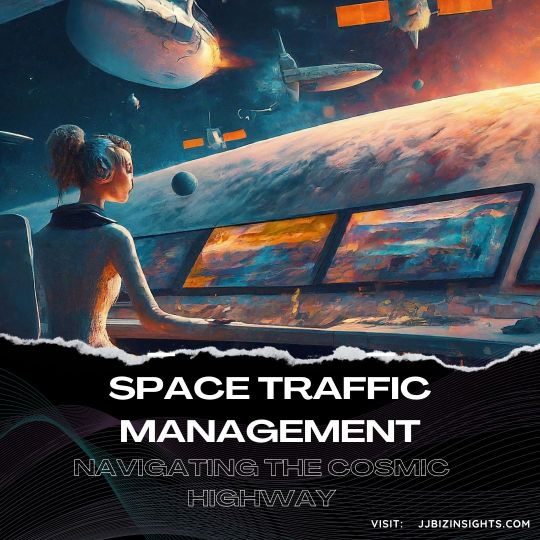#SpaceNews
Explore tagged Tumblr posts
Text
First images from the Euclid Telescope Released by ESA on November 7, 2023





For the latest Euclid discoveries visit this tracker - https://www.jameswebbdiscovery.com/other-missions/euclid/euclid-telescope-discoveries
Source: ESA - https://www.esa.int/Science_Exploration/Space_Science/Euclid/Euclid_s_first_images_the_dazzling_edge_of_darkness
112 notes
·
View notes
Text

28,000 Kmph, 1,600 Degrees: Fireball Test Before Sunita Williams Landed
3 notes
·
View notes
Text
The Moon's Age: What It Means for Earth and the Solar System | Researchatory.AI By Aakash Khurana
Mind blown! New research suggests our Moon is older than we thought – possibly 4.51 BILLION years old! This changes everything we know about the early solar system. #MoonFacts #SpaceNews #ScienceFacts #Moon #Space #Science #OMG #Wow #Facts #DidYouKnow #MindBlown #Moon #Space #Astronomy #Science #Lunar #SolarSystem #Discovery #NewResearch #AgeOfTheMoon #SpaceExploration
Let's delve deeper into why this discovery is so significant:
1. The Giant Impact Theory:
For a long time, the prevailing theory was that the Moon formed from the debris of a massive collision between Earth and a Mars-sized object called Theia. This impact, it was thought, occurred about 4.5 billion years ago.
This theory is widely accepted because it explains many of the Moon's characteristics, such as its size, composition, and lack of a large iron core.
2. The New Findings:
Recent analysis of lunar crystals brought back from the Apollo 17 mission has revealed that the Moon could be up to 4.51 billion years old. This is about 40 million years older than previous estimates.
These crystals, called zircons, are like tiny time capsules that preserve information about the Moon's early history. By analyzing the radioactive isotopes within them, scientists can determine their age.
3. Why Does This Matter?
* Understanding the Early Solar System: The age of the Moon provides crucial insights into the timing of events in the early solar system. It helps us understand when planets formed, when major collisions occurred, and how the solar system evolved.
* Evolution of Earth: The Moon's formation had a profound impact on Earth. It contributed to our planet's tilt, the tides, and possibly even the conditions for life to emerge. A more accurate age of the Moon can help us better understand these processes.
* Challenging Existing Models: The new findings challenge some of the existing models of the Moon's formation and evolution. This means scientists need to revisit those models and refine them to account for the new data.
4. The Ongoing Debate:
While the new findings are compelling, the age of the Moon is still a topic of debate among scientists. Some researchers argue that the Moon might be even older, while others suggest it could be younger.
More research and analysis of lunar samples are needed to resolve these discrepancies and get a more definitive answer about the Moon's age.
In Conclusion:
The discovery that the Moon might be older than we thought is a significant development in lunar science. It highlights the ongoing nature of scientific discovery and the importance of continued exploration. As we learn more about the Moon, we gain a deeper understanding of our own planet and the solar system we live in.
For more info:
https://www.nhm.ac.uk/discover/how-did-the-moon-form.html
#MoonFacts#SpaceNews#ScienceFacts#Moon#Space#Science#OMG#Wow#Facts#DidYouKnow#MindBlown#Astronomy#Lunar#SolarSystem#Discovery#NewResearch#AgeOfTheMoon#SpaceExploration#research#technology
2 notes
·
View notes
Text

SUBSCRIBE NOW ON OUR PODCAST CHANNEL: https://www.youtube.com/@SpaceTalksX, that managed by https://www.youtube.com/@SpaceSciNetwork
2 notes
·
View notes
Text
Texas senators: Move space shuttle Discovery from Smithsonian to Houston
NASA’s retired space shuttle Discovery may be removed from the Smithsonian and put on display in Houston, if two lawmakers from Texas get their way. U.S. Senators John Cornyn (R-TX) and Ted Cruz (R-TX) on Thursday (April 10) introduced the “Bring the Space Shuttle Home Act

#SpaceShuttleDiscovery#TexasSenators#HoustonSpaceCenter#Smithsonian#SpaceExploration#NASA#SpaceHistory#HoustonSpaceMuseum#ShuttleDiscovery#SpaceScience#NASAHistory#SpaceNews#MuseumExhibits#SpaceTech#TexasNews#AstronomyNews#SpaceHeritage#SpaceShuttle#HoustonSpaceNews
0 notes
Text
NASA Monitors 'City Killer' Asteroid YR4 as 2032 Approach Raises Concerns
NASA tracks Asteroid YR4—a potential "City Killer" with a 3.1% collision risk in 2032. Discover how planetary defense efforts are gearing up to protect major cities like Mumbai, Kolkata, and Dhaka.
June 28, 2024 — NASA has issued a renewed alert regarding Asteroid YR4, a near-Earth object currently traveling approximately 500,000 miles from our planet. Scientists project the asteroid could make a close approach—or even strike Earth—in 2032, with major cities like Mumbai, Kolkata, and Dhaka potentially in its crosshairs. While initial impact probabilities were low, updated calculations now…
0 notes
Text
2032年のハルマゲドン?アステロイドの脅威は本物です!🚨
現実のハルマゲドンが間近に迫っているのでしょうか?
新たに発見された小惑星「2024 YR4」は、科学者が注目しており、2032年12月22日に地球に衝突する可能性があると予測されています
サイエ��スフィクションを忘れてください
これはサイエンスノンフィクションであり、注意を���う時が来ました
知っておくべきこと:
•脅威:2024年に発見された小惑星「2024 YR4」は、その大きさが40メートルから90メートルと推定されています。
•オッズ:当初、衝突の確率は1.2%でしたが、ESA(欧州宇宙機関)は最近それを2.2%に引き上げました。
1.これは小さなことのように思えるかもしれませんが、専門家は注目に値するイベントと考えています3.ある専門家は、この確率はまれであり、2000年以来2番目のケースであると指摘しています。
•影響:衝突は壊滅的なものになる可能性があります。40メートルの小惑星は村を破壊する可能性があり、90メートルの小惑星は東京23区の面積を壊滅させる可能性があります。
3.幅 1 キロメートルのクレーターと広範囲にわたる爆風の影響を想像してみてください。
•先例:2013年、はるかに小さな隕石(約1700万)がロシアのチェリャビンスク上空で爆発し、広島の原爆30発の力で爆発しました。
1.「2024 YR4」は、何倍も強力になる可能性があります。
これで終わりなのか?
強ち!「2024 YR4」が無事に地球を通過する可能性は十分にあります1.科学者が観測を行えば行うほど、その軌道をより正確に予測できるようになります3.実際、データが収集されるほど、影響の確率が減少する可能性が高くなります4.ある専門家は、以前の小惑星の衝突確率が、さらなる観測後に最終的に0%に低下したことを思い出します。
私たちに何ができる?
•プラネタリーディフェンス:NASAは、宇宙船が意図的に160mの小惑星に衝突したDARTミッションで、小惑星の軌道を変更する能力をすでに実証しています。
4.検討されている他の選択肢には、核兵器の使用、宇宙船の取り付け、さらには巨大な帆の展開が含まれます。
•グローバルコラボレーション:IAWN(International Asteroid Warning Network)は、状況を積極的に監視しています。
4.この出来事は、人類が共通の脅威に対して団結する必要性を浮き彫りにしています。
•災害への備え:避難戦略や国際的責任などの要素を考慮し、潜在的な影響に備えるためのシミュレーションが実施されています。
4.経済価値に基づいてどの都市を貯蓄するかについての議論さえ行われています。
SFから現実へ
何十年もの間、SFは小惑星の衝突と惑星防衛の可能性を探求してきました5.「アルマゲドン」のような映画から「機動戦士ガンダム」のようなシリーズまで、宇宙の災害を回避するという考えは私たちの想像力をかきたててきました5.SFのコンセプトの中には、突飛に思えるものもあるかもしれませんが、現実世界の科学の進歩を刺激することがよくあります。
(まだ)慌てないでください!
小惑星の衝突の可能性は深刻な問題ですが、落ち着くことが重要です。専門家は、これは注意深く監視すべき状況であり、必ずしも恐れるべきではないと強調しています2.ある専門家が「研究者として言うのは怖いけど、今回はきっと大丈夫だから心配しないで」と心強く述べています。
#AsteroidImpact#Armageddon#SpaceNews#Science#PlanetaryDefense#NASA#ESA#2024YR4#NearEarthObject#CosmicThreat
1 note
·
View note
Text
youtube
#news#newshawkers#viral#trending#breakingnews#latestnews#hindinews#newsupdate#space#spacex#spacenews#isro#satellite#shorts#Youtube
0 notes
Text
#PlanetAlignment#CelestialEvent#SixPlanets#Astronomy#NightSky#CanadaSky#SpaceLovers#Stargazing#CosmicWonder#AstronomyLovers#PlanetaryAlignment#Skywatching#SpaceNews#AstroEvents#RareAstronomy
0 notes
Text
#PlanetAlignment#CelestialEvent#SixPlanets#Astronomy#NightSky#CanadaSky#SpaceLovers#Stargazing#CosmicWonder#AstronomyLovers#PlanetaryAlignment#Skywatching#SpaceNews#AstroEvents#RareAstronomy
0 notes
Text
#PlanetAlignment#CelestialEvent#SixPlanets#Astronomy#NightSky#CanadaSky#SpaceLovers#Stargazing#CosmicWonder#AstronomyLovers#PlanetaryAlignment#Skywatching#SpaceNews#AstroEvents#RareAstronomy
0 notes
Text
Game Changer Discovery released on Mar 13, 2024: Webb Telescope Reveals Recipe for Life May Be Commonplace in the Universe
The James Webb Space Telescope has discovered complex organic molecules (COMs) around young stars that haven't even formed planets yet. These COMs, often linked to life on Earth, were found frozen in ice.
This discovery suggests life's building blocks might be much more common in the universe and could be delivered to young planets by comets and asteroids. Webb's future observations will help us understand how COMs form and move throughout stellar systems, potentially revealing prime locations for life beyond Earth. #JWST #SpaceNews #Astrobiology
Read more here - Webb Telescope Reveals Recipe for Life May Be Commonplace in the Universe

24 notes
·
View notes
Text
Space Traffic Management: It's Not Just Rocket Science, It's Rocket Traffic Control! ️ #SpaceExploration #Cosmos

#SpaceTrafficManagement#STM#SpaceTech#SpaceExploration#Cosmos#SpaceDebris#Sustainability#CollisionAvoidance#OrbitalMechanics#FutureOfSpace#Innovation#Science#Technology#SpaceNews#SpacePolicy
0 notes
Text
Chinese Space is HEATING up!
@Ellieinspace has a conversation with @DongfangHour about Chinese Space, including launches that would have been more than the U.S. without Starlink… @techmap9 Unveiled China’s INSANE SpaceX Starships that look like… Ellon Musk didn’t patient his design’s for a reason. Spaceport License plus more UK space news brought to us by Tom Dune – UK Space News, @tomduneofficial. Ellie’s conversation…

View On WordPress
#chinaspace#ISRO#Landspace#Orbex#Saxavord#Scotland#spaceflight#spacenews#UK#@DongfangHour#@EllieinSpace#@PointOrView#@techmap9#@tomduneofficial
0 notes
Text
Rocket Reuse Triumph: SpaceX Ignites a New Space Age
Rocket Reuse Triumph: SpaceX Targets New Heights In a testament to the company unwavering commitment to rocket reusability, the aerospace giant is poised to outdo its own record. The stage is set for the launch of a Falcon 9 rocket, slated to carry 23 Starlink internet satellites into orbit. The anticipated liftoff from Florida’s Cape Canaveral Space Force Station promises to be a spectacle,…

View On WordPress
1 note
·
View note
Text
Sights on a new flyby for New Horizons – Astronomy Now

In 2019, NASA’s New Horizons spacecraft flew past Arrokoth, the most distant and primitive object ever explored. Now, as it ventures further, chief scientist Alan Stern shared exciting updates. New Horizon targeted Arrokoth in a close flyby in 2019. Read more
#NewHorizons#AstronomyNews#SpaceExploration#AstronomyNow#NASA#SpaceScience#FlybyMission#SolarSystemExploration#Astrophysics#SpaceDiscovery#AstronomyUpdates#SpaceResearch#NASAUpdates#PlanetaryScience#NewHorizonsMission#SpaceNews#StellarExploration#SpaceTech#AstronomyLovers
0 notes